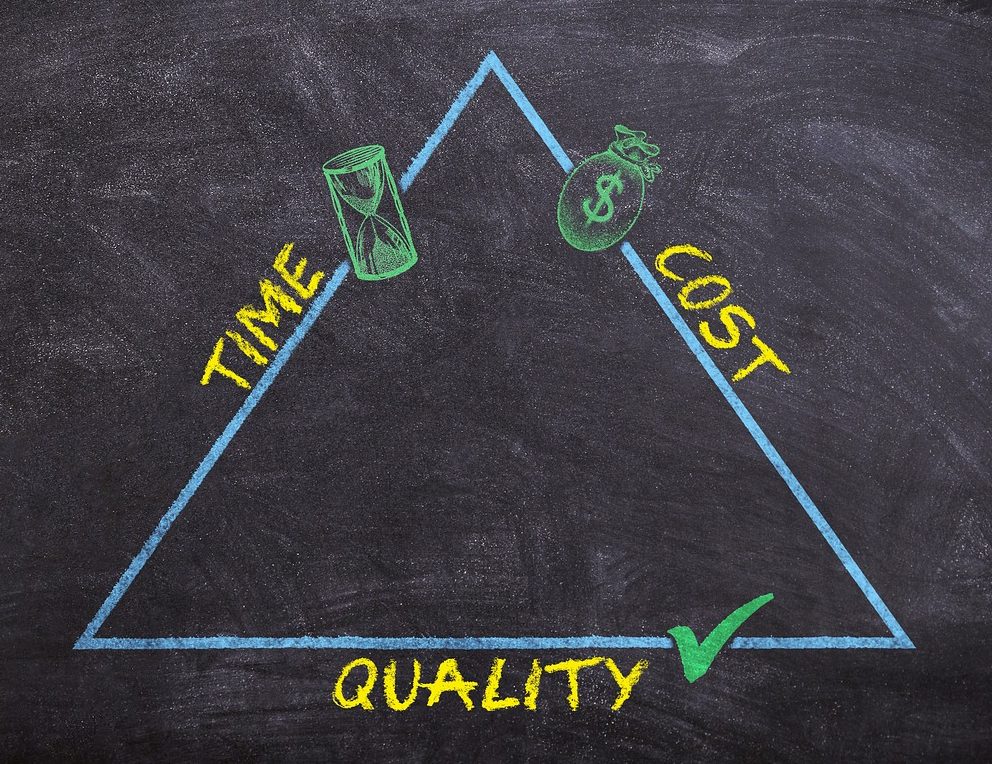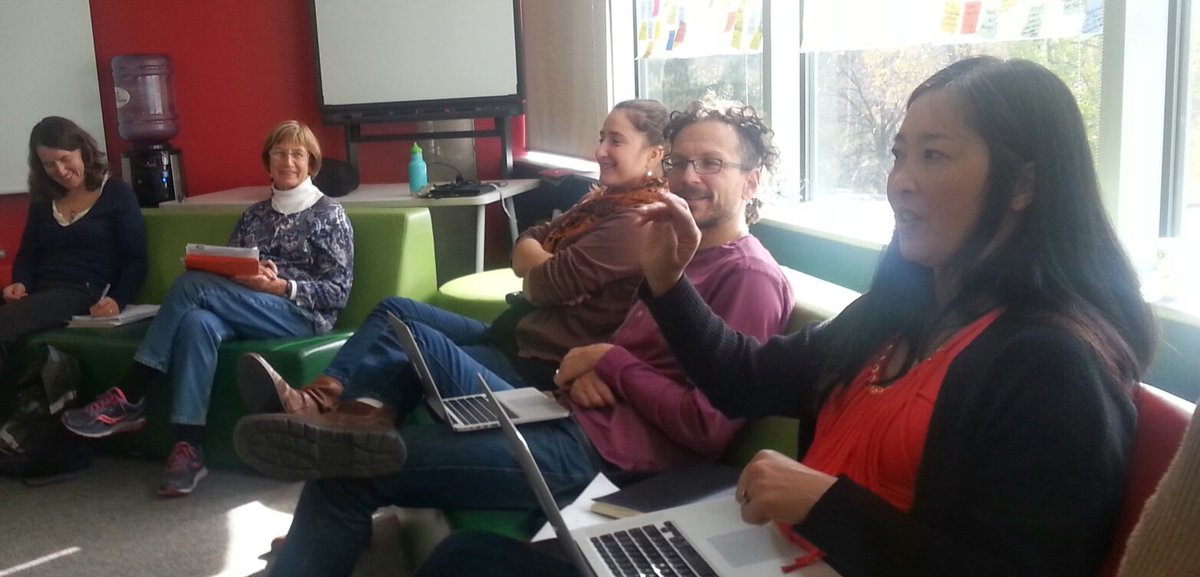by Nicole Bedford, CFICE Project Manager and Communications Coordinator
You’ve approached the partners, discussed governance and responsibilities, and now your team is ready to develop a realistic project budget and work plan. For funders like SSHRC, the key word is feasibility. This means they are looking for work plans and associated budgets that can actually be accomplished on time, and within the award amount available.
You’ll need to think through the scope of your project in significant detail in order to produce the most viable budget and work plan possible. Here are some steps to follow that will help.
List your current personnel resources
Start your work and budget planning process by preparing a list of the personnel you know will be working on your project. This list will be based on the discussions you’ve already had with project partners, and will entail thinking in more detail about how many hours each partner will realistically be able to contribute to the project (on average). If you win a SSHRC grant, these details will likely change as your project progresses, however, starting with this list will help give you a sense of the person-power you have available for completing tasks.
Here’s a sample breakdown from a CFICE working group:
Research Assistant (RA; Master’s level): 10 hours per week (consistent)
Community Co-lead: 5 hours per week (variable)
Academic Co-lead: 7 hours per week (variable)
Total: 22 hours per week
When you estimate the number of hours per week that your team will be able to spend on project work, you will get a much more accurate sense of how long it will take to complete the tasks associated with your project. For example, a literature review might take an undergraduate RA 30 hours to accomplish, whereas a Master’s RA might only take 20. Also, keep in mind the way that these hours play out in terms of weeks and months. For the literature review, it will take three full weeks for an RA to complete, even though it only takes 30 hours in total to complete.
Note: It’s always better to estimate that project partners will be able to spend less time on the project than more. It’s easier to put extra capacity to work than to find capacity where it doesn’t exist!
Clearly outline your project’s major tasks or activities
The next step is to lay out your major project deliverables. The best way to do this is to think about your end goal and list the most important tasks that need to be accomplished in order to reach that goal.
For CFICE, the end goal of the project was to answer the research question: How can community-campus partnerships be designed and implemented to maximize the value created for non-profit, community-based organizations?
From this end goal, the CFICE team identified the major activities they would need to accomplish in order to answer this question. These included:
- Working IN community-campus partnerships in different sectors, such as violence against women or poverty reduction, on actual projects.
- Studying/evaluating how each CCE project functioned (looking at project governance; decision-making processes; whether the projects accomplished their goals; how partners communicated; what worked and what didn’t; etc.).
- Analyzing the data across all the projects to determine if CCE projects function the same across sectors or not.
- Answering the research question by coming up with recommended actions for working in CCE projects based on the research data.
- Sharing results with CCE practitioners and professionals!
In a project plan, your major tasks are known as milestones. Milestones allow you to plan the minutia of your project tasks and deliverables within a feasible timeline. They also act as markers to signal whether your project is staying on track once it’s actually in progress!
Using these milestones, you can then break down each section of the work into smaller, easier-to-plan tasks.
Here is a basic example from CFICE:
- Working IN community-campus partnerships in different sectors, such as violence against women or poverty reduction, on actual projects.
- Identifying project partners and roles
- Developing project proposals and parameters (including budget) with project partners
- Applying for ethics clearance (if applicable)
- Dispersing project funds (as needed)
- Hiring student research assistants (as needed)
- Running the project
- Evaluating the project (submission of written report)
- Sharing project results (knowledge mobilization)
Plan your activities from deadlines to start dates
 With your completed list of milestones and associated tasks, you will be ready to start plotting everything onto a feasible timeline. As any good project manager knows, this process entails starting with final deadline(s) and working your way to the project’s beginning.
With your completed list of milestones and associated tasks, you will be ready to start plotting everything onto a feasible timeline. As any good project manager knows, this process entails starting with final deadline(s) and working your way to the project’s beginning.
Using your project management software (which could be as simple as Microsoft Excel), insert the final date by which your project must be finished.
Next, add in your milestones from the previous step, and under these milestones, add in the associated tasks. Make sure each task falls in its own row (if using Excel). I recommend using project management software or Excel so you can easily sort, add, and remove tasks that pop up as you insert them into the timeline.
With your personnel resources in-mind, work backwards from the project end date to figure out your deadlines based on how much time it will take for your team to complete each task. Take into account time delays like vacations and statutory holidays too!
For example:
End of Project: March 31, 2019
- Sharing CFICE results
- 1.5 years to complete (special issues with journals/attend spring/fall conferences to reach international audience, etc.)
- Start date: November 1, 2017
- End date: March 31, 2019
- Answering the research question/developing recommendations and key findings
- This step must be completed before the next step can begin
- 6 month consultative process; July-August resources are unavailable due to vacations
- Start date: March 1, 2017
- End date: October 31, 2017
- Analyzing the data across all the projects
- This step must be completed before the next step can begin
- 3 month consultative process (includes 1 in-person meeting)
- Start date: November 15, 2016 (start in Nov. to take into account December holidays)
- End date: February 28, 2017
- Studying/evaluating how each CCE project functioned
- This step must be completed before the next step can begin
- 6 month “official” data collection process (CAN be completed over the summer months, but July-Aug resources have less time towards project)
- Start date: April 1, 2016
- End date: November 16, 2016
- Working IN community-campus partnerships on actual projects
- This step must be completed before the next step can begin
- Goal: To work in as many CCE projects as possible before evaluation stage.
- 6 month data collection process (CAN be completed over the summer months)
- Start date: April 1, 2012
- End date: March 31, 2016 – approximate midterm of project
As you work through this process of planning your project from the end date to the start date, you will notice two things:
- Whether or not your project milestones can actually be accomplished within SSHRC’s grant timeline; and
- Where you might need to increase your resource availability to ensure you can accomplish your project’s goals.
These are important factors to notice before tackling the budget. They will help you balance the scope of your project’s activities with the budget you have. Keeping everyone on the same page and realistic about what can be accomplished is important.
Brainstorm and research a list of associated activity costs as a team
Now that you have all your activities laid out in a work plan, you can start to brainstorm the costs that will be associated with each activity. Doing this activity with a team is the best way to go, since more minds can help with identifying all the different associated project costs you may incur.
For example, take the “Analyzing the data across all projects” task, which breaks down to:
- Compiling the data into a single platform (20 hours)
- Preliminary analysis of data using software (10 hours + software purchase)
- In-depth analysis of data based on software results (20 hours)
- In-person 2-day event for team analysis of data findings (20 hours planning; 14 hours in-person; 15 hours transcribing meeting notes; 5 hours processing travel claims/expenses)
- Final report on findings (20 hours)
From this example, we can brainstorm the following costs:
- Personnel:
- Research Assistant support (for analyzing data)
- Project administration support (for processing travel claims/expenses; helping with event planning/organization)
- Honouraria for community partner participation
- Non-personnel costs:
- Catering
- Audio/visual support
- Meeting supplies
- Meeting space rental
- Data analysis software
Research the price of as many activity costs as possible
Next, or while you are brainstorming as a team, research the actual costs for as many of the items in your expense list. For example, if you are planning to host two in-person meetings a year, and you know that two of your partners will be flying in from BC, research the costs of flights, accommodations, and meals so you get a much more accurate sense of what this activity will cost.
Two tips here: (1) Keep note of where you find your project costs so you can include this information in the budget justification of your SSHRC application, and (2) don’t forget to include the costs of employer fees when estimating staff pay!
Check your brainstormed costs against the grant’s rules
Once you’ve brainstormed and researched your project costs, check them against the grant’s rules of eligible and ineligible expenses (for SSHRC’s eligible/ineligible expenses, see the Financial Administration section on this page of their website). This step will help you identify any costs NOT covered by the funder, so you can either further narrow your project’s scope, or start to identify outside sources of funding.
Outside sources of funding can include in-kind contributions from your project partners, or external grants and bursaries. In CFICE’s case, our partners committed to a significant portion of in-kind contributions (both cash and otherwise), which allowed us to do things such as book free meeting space in the community and hire more students than usual for a project budget our size. Once this outside funding was identified, we were able to shift project funds to other budget lines as needed to ensure all our associated project tasks could reasonably be completed.
Build in an expense reserve
 Finally, you will want to build into your budget a bit of cushioning to ensure you have the money to cover any unanticipated expenses as your project progresses. Make sure the amount you hold in reserve can actually be spent before the end of the project in case no unanticipated expenses come up. An idea could be to create a knowledge mobilization fund or a small project fund where you can hold a certain amount of money to which participants can apply for unanticipated knowledge mobilization/project activities such as conference attendance, publications, etc.
Finally, you will want to build into your budget a bit of cushioning to ensure you have the money to cover any unanticipated expenses as your project progresses. Make sure the amount you hold in reserve can actually be spent before the end of the project in case no unanticipated expenses come up. An idea could be to create a knowledge mobilization fund or a small project fund where you can hold a certain amount of money to which participants can apply for unanticipated knowledge mobilization/project activities such as conference attendance, publications, etc.
Decide how the team will manage the work plan and the budget
The last thing you and your team need to consider as part of your work and budget planning, is how you will manage these pieces once the project starts.
For CFICE, we created a budget committee designated to review the budgets on a yearly and as needed basis. This committee is responsible for ensuring we are on-track with our spending. They advise the principal investigator on what costs to approve that weren’t originally planned. And, having the committee itself allows for greater transparency around project management and budgeting decisions, which helps keep CFICE attuned to its community-first mandate.
We also developed a reporting process that is completed by team leads each quarter to ensure we can accurately assess whether we are meeting project milestones, and if not, to allow us to adjust timelines and budgets so we can complete all project tasks to meet our final project deadline.
Overall, the more in-depth you get with your work plan and budget brainstorming and research, the more accurate your final work plan and budget will be, and the more confident you will sound when writing about the feasibility of your project for your SSHRC partnership grant application. And of course, the more feasible your project sounds, the more likely you are to actually receive money for your efforts!
Do you have any tips for creating work plans and budgets for your SSHRC partnership project? If so, share them in the comments below!



